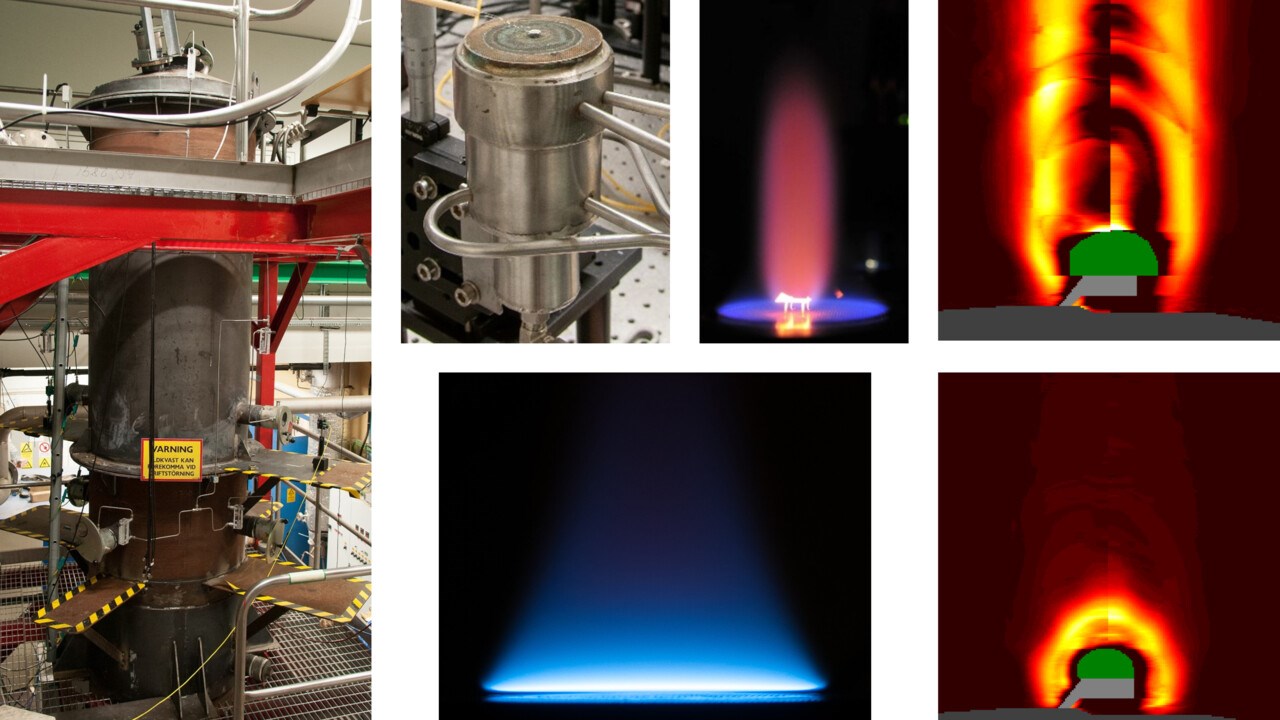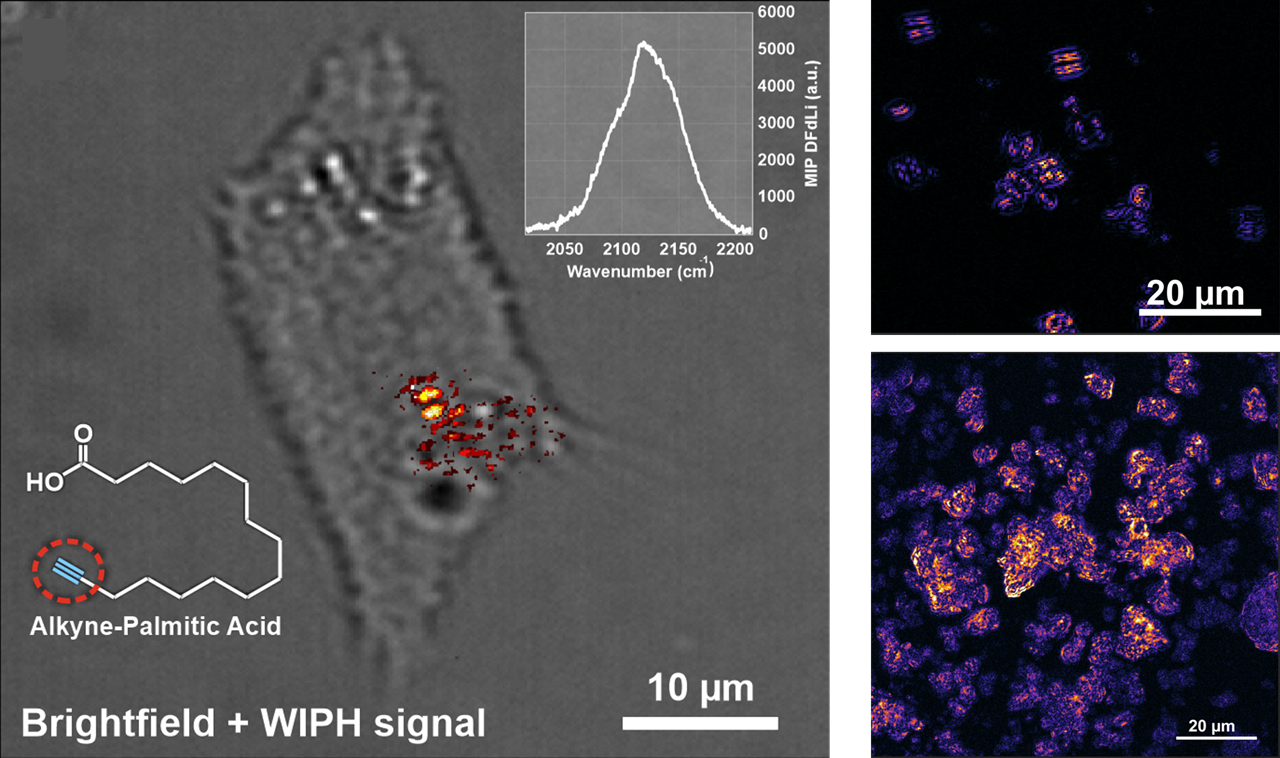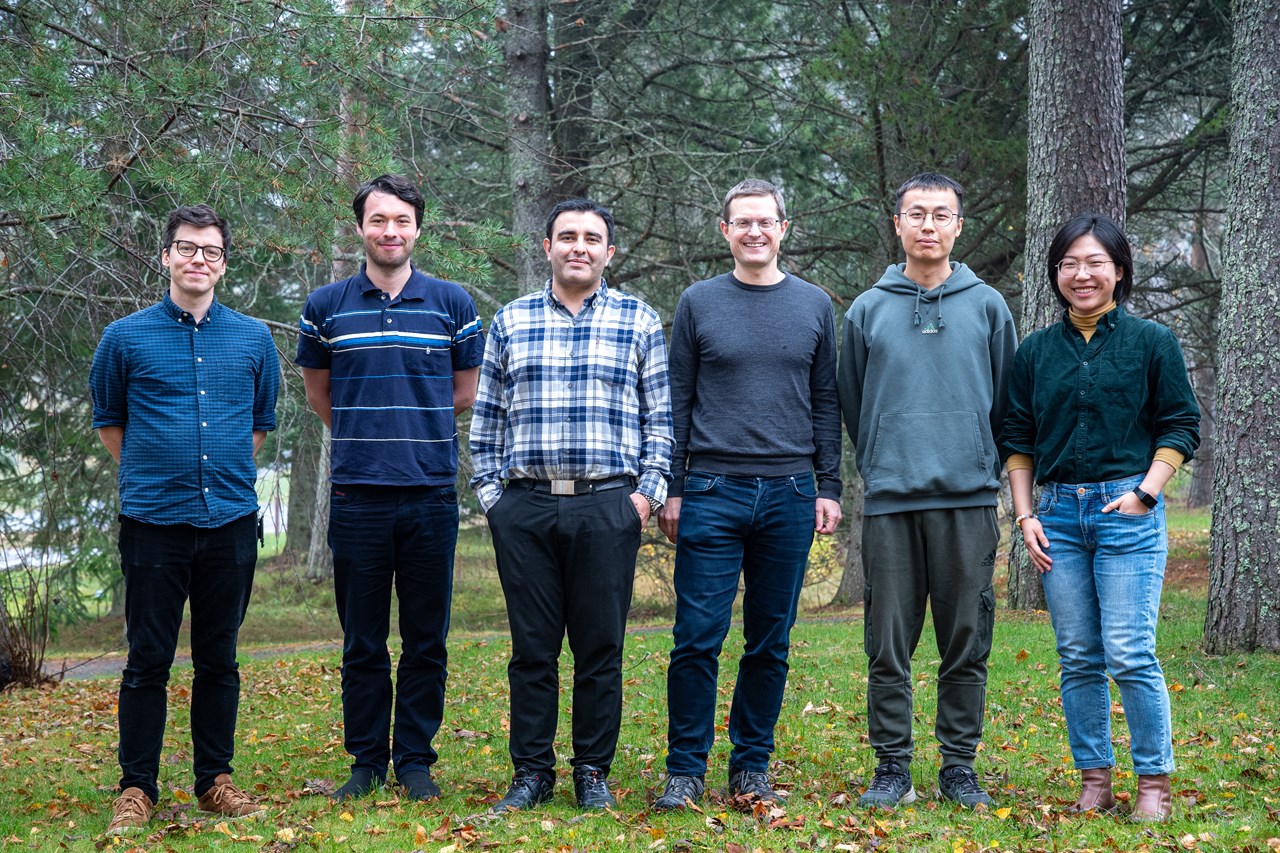
Image: Florian Schmidt

Image: Florian Schmidt
Research group Combustion diagnostics, exhaled breath gas analysis and chemical imaging.
Sensitive detection and accurate quantification of atomic and molecular species is important in many fields of natural science, engineering and in industry. In the Applied Optics group we develop novel laser-based spectroscopic techniques and use them to conduct interdisciplinary research in fields such as energy technology, life science and medical science. The focus lies on fast in situ measurements of trace species and biomolecules.

Pilot-scale entrained flow reactor. Laboratory burner and flames. Laser absorption imaging of atomic potassium.
ImageFlorian SchmidtCombustion diagnostics
In the quest for a more sustainable society, thermochemical conversion of biomass from forest or agricultural residues and waste can be used to replace fossil fuels in heat and power generation, as well as the production of transport fuels and chemicals. Rapid in situ diagnostics is needed to better understand, optimize and control high-temperature combustion and gasification processes. Our research focus lies on detection of major species, gas temperature, soot and inorganic compounds, such as potassium.
Key publications
1. E. Thorin, K. Zhang, D. Valiev, F. M. Schmidt, Simultaneous detection of K, KOH, and KCl in flames and released from biomass using photofragmentation TDLAS, Optics Express 29, 42945-42961 (2021), https://doi.org/10.1364/oe.446725
2. A. Sepman, Y. Ögren, Z. Qu, H. Wiinikka, F. M. Schmidt, Real-time in situ multi-parameter TDLAS sensing in the reactor core of an entrained-flow biomass gasifier, Proceedings of the Combustion Institute 36, 4541-4548 (2017), https://doi.org/10.1016/j.proci.2016.07.011
3. Z. Qu, E. Steinvall, R. Ghorbani, F. M. Schmidt, Tunable diode laser atomic absorption spectroscopy for detection of potassium under optically thick conditions, Analytical Chemistry 88, 3754–3760 (2016), https://doi.org/10.1021/acs.analchem.5b04610
4. Z. Qu, R. Ghorbani, D. Valiev, F. M. Schmidt, Calibration-free scanned wavelength modulation spectroscopy – application to H2O and temperature sensing in flames, Optics Express 23, 16492-16499 (2015), https://doi.org/10.1364/oe.23.016492

Alkyne-tagged fatty acids in living 3T3 cell. D2O in microalgae. DPA powder.
ImageFlorian SchmidtFast chemical imaging
Chemical imaging is an important tool in life science. We use and further develop mid-infrared photothermal microscopy for the analysis of living cells and microorganisms. We also use laser absorption imaging for the characterization of gaseous samples.
Key publications
1. E. Paiva and F. M. Schmidt, Ultrafast widefield mid-infrared photothermal heterodyne imaging, Analytical Chemistry (2022), https://doi.org/10.1021/acs.analchem.2c02548
Real-time breath gas analysis
Breath gas analysis is a rapidly growing area of research aiming at fast, non-invasive detection of biomarkers in exhaled breath relevant to medical diagnostics, physiology and toxicology. The method has the potential to revolutionize non-invasive point-of-care and personalized diagnostics. Further research is needed to develop analytical techniques for reliable quantification of the biomarker molecules, and to better understand their origin down to the cellular level. The current focus of our research is on real-time analysis of small gasotransmitter (signalling) molecules, such as carbon monoxide, and their role in respiratory diseases.
Key publications
1. R. Ghorbani and F. M. Schmidt, Fitting of single-exhalation profiles using a pulmonary gas exchange model – application to carbon monoxide, Journal of Breath Research 13 026001 (2019), https://doi.org/10.1088/1752-7163/aafc91
2. R. Ghorbani, A. Blomberg, F. M. Schmidt, Modeling pulmonary gas exchange and single-exhalation profiles of carbon monoxide, Frontiers in Physiology 9 927 (2018), https://doi.org/10.3389/fphys.2018.00927
3. R. Ghorbani and F. M. Schmidt, ICL-based TDLAS sensor for real-time breath gas analysis of carbon monoxide isotopes, Optics Express 25, 12743-12752 (2017), https://doi.org/10.1364/OE.25.012743
4. F. M. Schmidt, O. Vaittinen, M. Metsälä, M. Lehto, C. Forsblom, P.-H. Groop, L. Halonen, Ammonia in breath and emitted from skin, Journal of Breath Research 7, 017109 (2013), https://doi.org/10.1088/1752-7155/7/1/017109
Collaboration partners at Umeå University include the Thermochemical Energy Conversion Laboratory (TEC-Lab), the KBC-environment, the Department of Physics and the Department of Public Health and Clinical Medicine. Further collaborations are with e.g. RISE Piteå, Luleå University of Technology, Lund University, University of Helsinki, Tsinghua University, and the strategic research environment Bio4Energy.

Applied Optics group 2024. From left: Emil Thorin, Alexandre Salou-Quineche, Davood Khodadad, Florian Schmidt, Jinyan Liu, Canruo Chen.
ImageJunko TakahashiDepartment of Applied Physics and Electronics, TEC-Lab
KBC-building, Linnaeus väg 6 901 87 Umeå
Visiting Address
KBC-building, KB.G7, Room: 7.07.17
Dr. Ramin Ghorbani, Scania, Sweden
Dr. Damir Valiev, Center for Combustion Energy, Tsinghua University, Beijing, China
Dr. Zhechao Qu, PTB Braunschweig, Germany
Vetenskapsrådet - Swedish Research Council
Energimyndigheten- Swedish Energy Agency
Kempestiftelserna - The Kempe Foundations
SFO-Bio4Energy - Strategic Research Environment
Thermochemical Energy Conversion Laboratory
Publications

New funds for the development of mid-infrared photothermal imaging